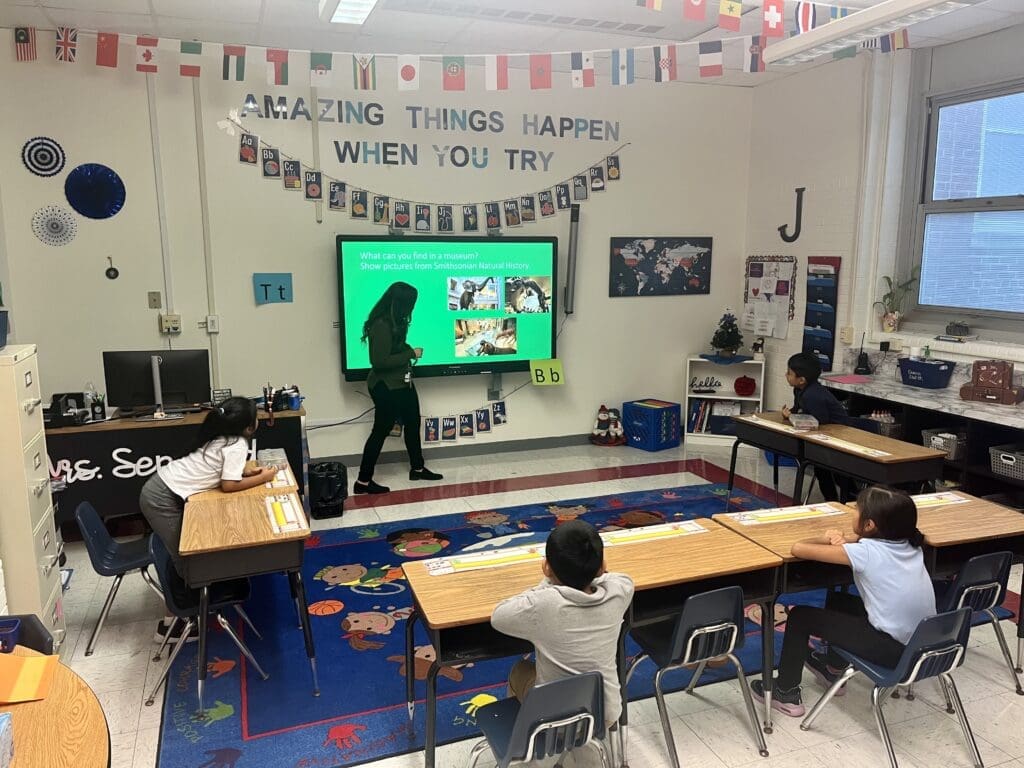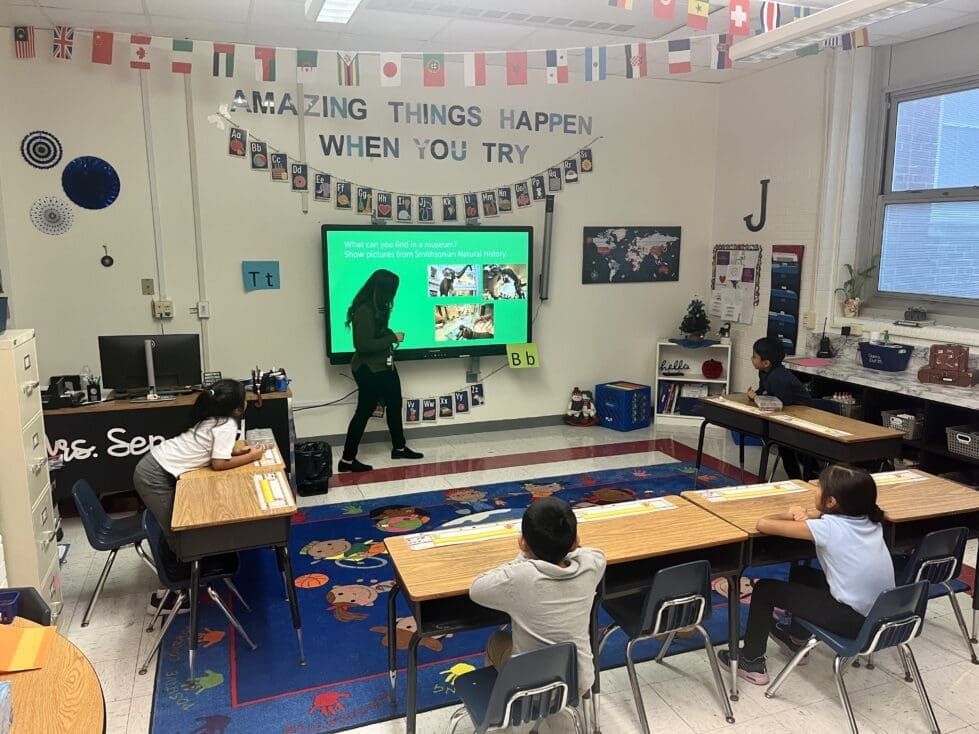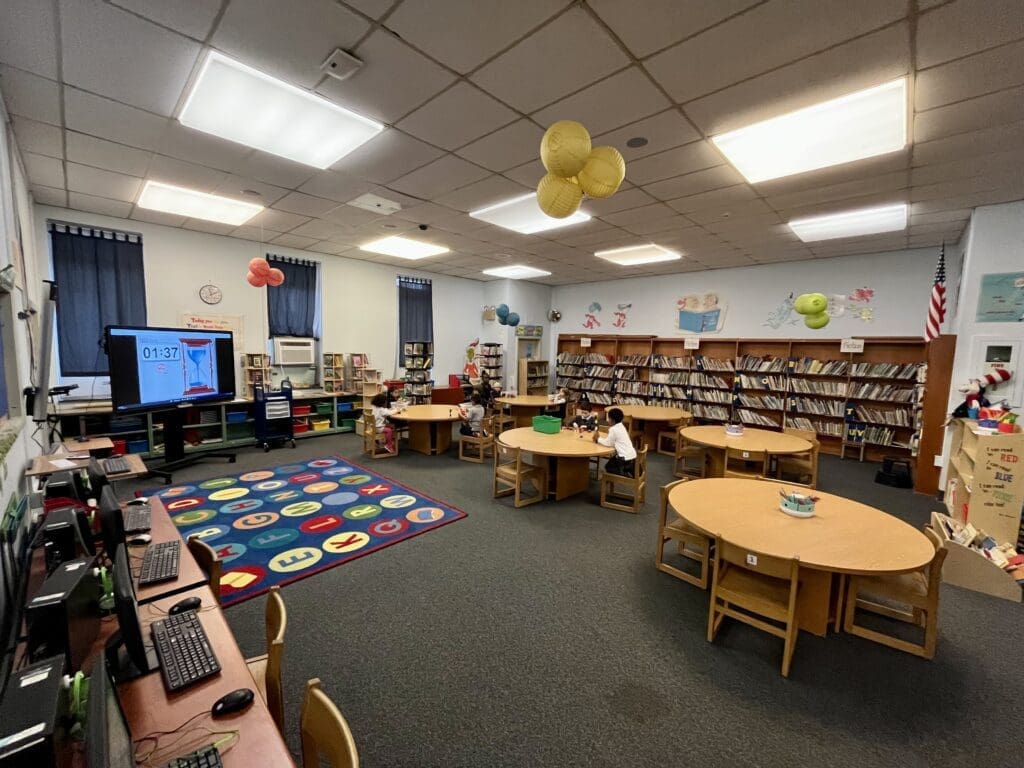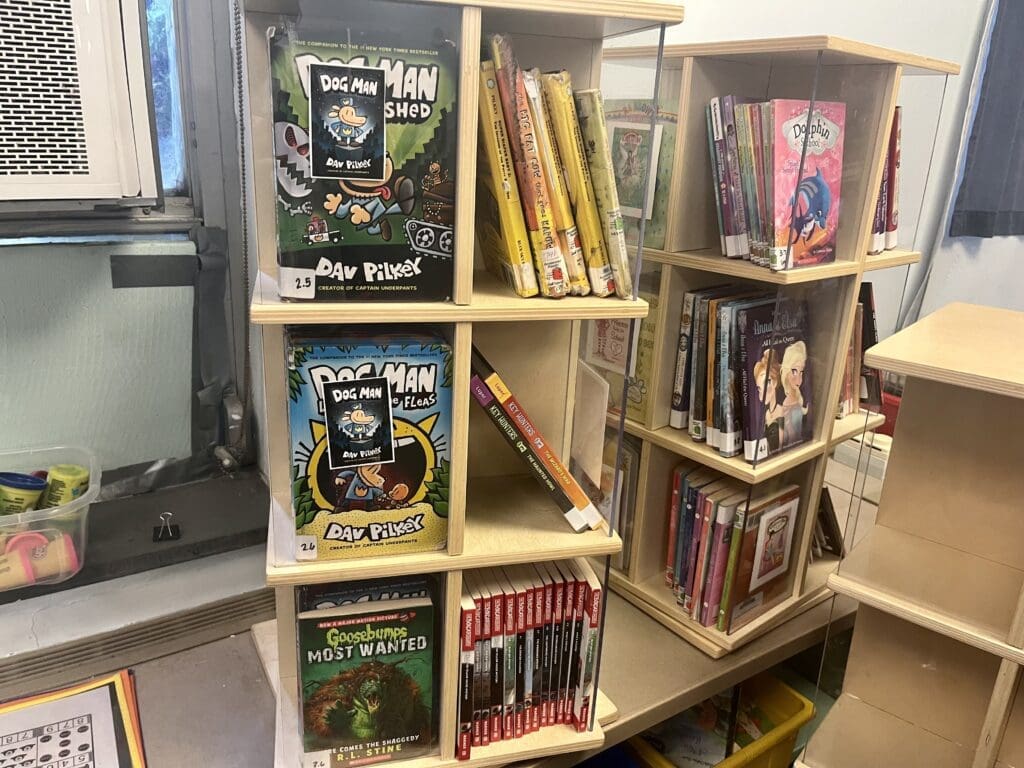
Woodbridge Early Childhood Education Center has 153 students who are learning English.
A handful of first-graders in a Woodbridge District school laughed and cheered Tuesday as they — in English — guessed what sorts of things can be found in a museum.
The goal of the small-group session at Woodbridge Early Childhood Education Center, which serves a large portion of students learning English, is to build students’ vocabulary and help them comfortably identify a word they already know in Spanish.
The school is one of 10 in Delaware named a 2022 National Elementary and Secondary Education Act Recognized School for the extraordinary success of its students.
Others include:
- Academia Antonia Alonso, Charter School
- Austin Baltz Elementary School, Red Clay Consolidated School District
- Claymont Elementary School, Brandywine School District
- Harry Eisenberg Elementary School, Colonial School District
- Laurel Elementary School, Laurel School District
- Lewes Elementary School, Cape Henlopen School District
- Pleasantville Elementary School, Colonial School District
- West Seaford Elementary School, Seaford School District
- Kathleen Wilbur Elementary School, Colonial School District
- Woodbridge Early Childhood Center, Woodbridge School District
Woodbridge, however, was singled out and named a Distinguished School.
Woodbridge Principal Dane Sears choked up when talking about how proud he is of his school.
“It was our goal to do right by all students here,” Sears said. “We wanted to put Woodbridge on the map. I’m proud to say we have.”
The school, off Sussex Highway in Greenwood, serves 594 students ranging from preschool to the second grade.
The 153 students at the school who are learning English are referred to as Multi-Language Learners, the latest term for English language learners. It’s considered more holistic and inclusive.
They represent 25% of the student body. This creates unique opportunities for the school to staff and create curriculum around the needs of its students, Sears said.
“Our Multi-Language Learners are an asset to our school, they are not a deficit,” Sears said. “Some people and schools might struggle to figure out how to serve these kiddos.
“Well, these students are who we’re here for and we’re here to educate every child regardless of their race or spoken language.”
The school will receive an $11,500 award which Sears said will largely be spent on filling the school library.
The other nine schools will each receive an $8,000 award.
Blades Elementary School in Seaford School District and Rehoboth Elementary School in Cape Henlopen School District were also recognized as 2022 Schools of Continued Excellence.
The continued excellence award is given to schools that have qualified as a Recognition School for the second consecutive year.
Why Woodbridge stands out
Right before the pandemic in 2019, the district received about $200,000 in opportunity funding, Sears said.
The school used the money to hire additional multi-language learner staff.
With the additional staff, the school has been able to create comprehensive schedules for each multi-language learner staff.
This allows them to rotate in block schedules to different classrooms and pick three to eight multi-language learners for small group intervention.
The group sessions could last 15 minutes, or they could last an hour, but the instruction is tailored to work on students’ deficiencies after taking the World-Class Instructional Design and Assessment test.
It is an alternative standardized test for students learning English that teachers across the state credit for helping them better understand where the students are academically, which helps the teachers better plan instruction.
Test scores range from one to six. After a student takes the baseline test when they first enroll in the school, there are expected benchmarks of progress specific to that student.
Woodbridge divides these students into A, B, or C levels depending on the level of achievement and expectation.
“We’re really intentional about that at the beginning of the school year,” said Stephanie Sharp, a multi-language learner teacher.
RELATED STORY: School sensory room aims to build skills of disabled students
RELATED STORY: DEconnectED event aims to help community become more involved with schools
Sharp and her colleagues also have “pre-class” where they spend about 15 minutes talking about the topic they will be learning.
“This is so they don’t go in cold turkey,” Sears said. “It’s a lot harder to have to learn a topic on top of learning English, so the pre-classes help prepare them for what’s ahead.”
Other instruction that occurs in the small group setting includes basic foundational skills of reading and writing or vocabulary development like what items are around the school.
“They’ll identify what the terms are in English and Spanish so the kids, using a pictorial dictionary, can brush up on terms around the school,” Sears said. “And it typically takes students munch longer to grasp writing English than speaking it.”
Writing is harder for students because it requires grammatical correctness, Sharp said.
Sears and Sharp both said the school has worked together to instill a love in reading for multi-language learners.
Rather than buying one-off books to fill the shelves, Sears said that the majority of their library is filled with collections of chapter books in a series.
Some of the series include “A to Z Mysteries,” “Magic Tree House,” “Diary of a Wimpy Kid,” “Frog and Toad,” and more.
“Our team that picks the books wanted to make sure that kids aren’t just reading and returning books, and if they get into the first book in a series, bam, now we have four, five, six other books to read,” Sears said.
“When they love what they’re reading, it doesn’t feel like a chore, and that’s so crucial when developing these students’ ability to speak English.”

Raised in Doylestown, Pennsylvania, Jarek earned a B.A. in journalism and a B.A. in political science from Temple University in 2021. After running CNN’s Michael Smerconish’s YouTube channel, Jarek became a reporter for the Bucks County Herald before joining Delaware LIVE News.
Jarek can be reached by email at [email protected] or by phone at (215) 450-9982. Follow him on Twitter @jarekrutz
Share this Post






